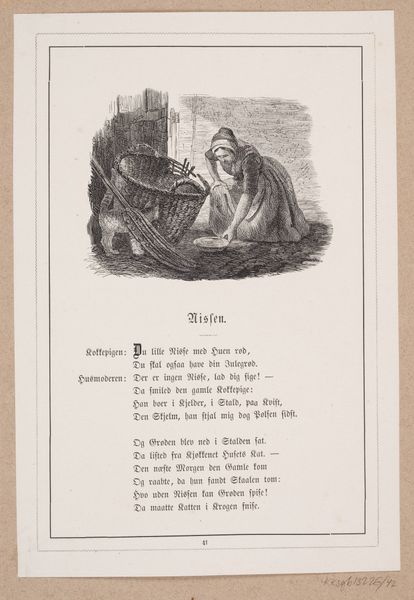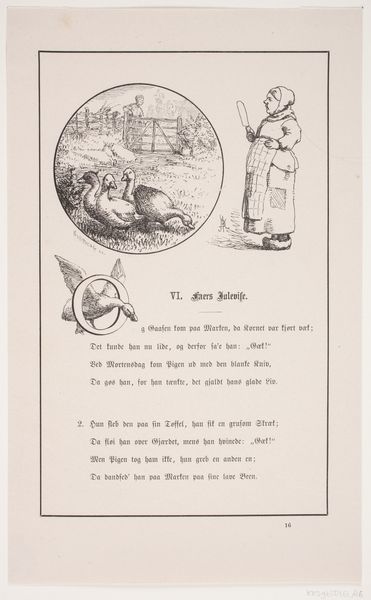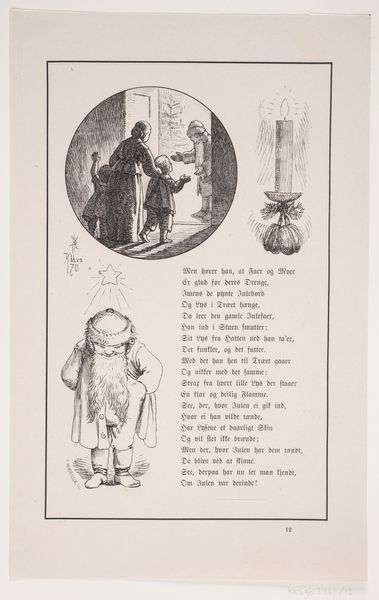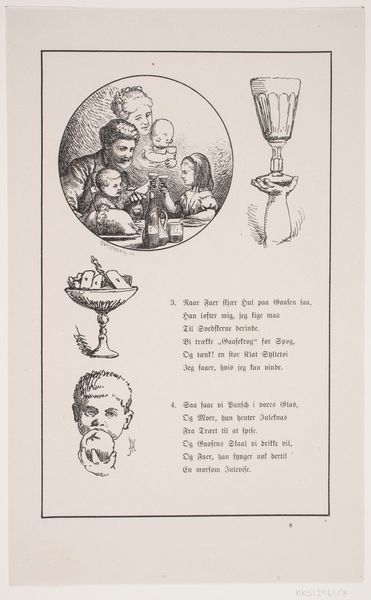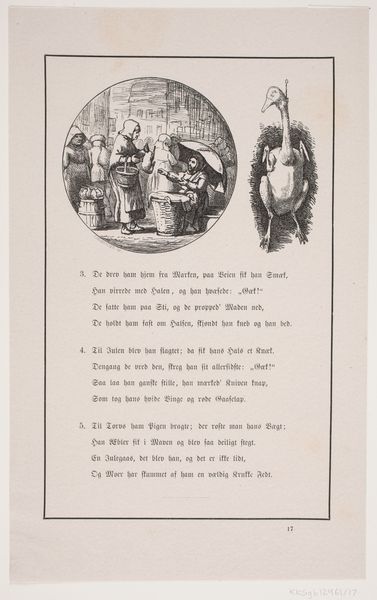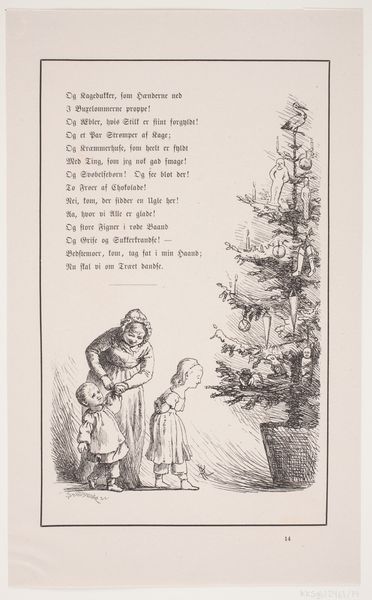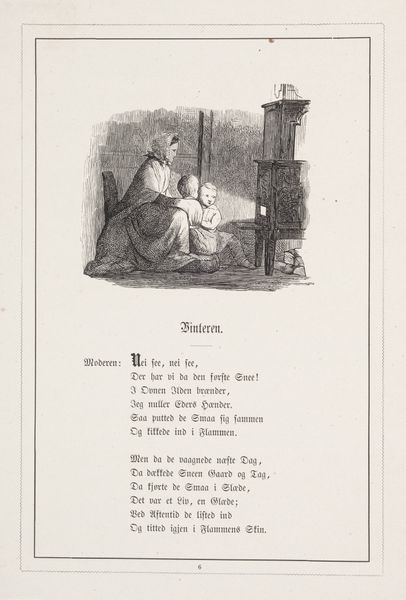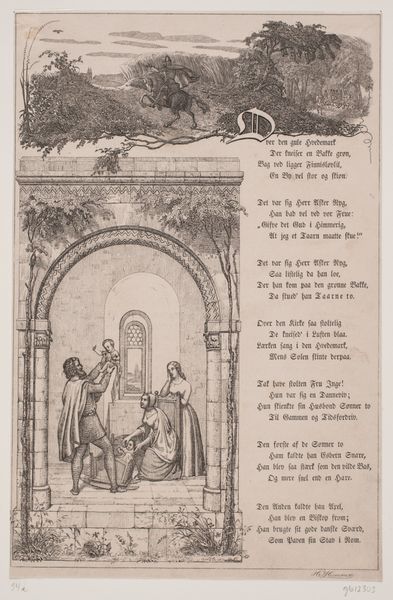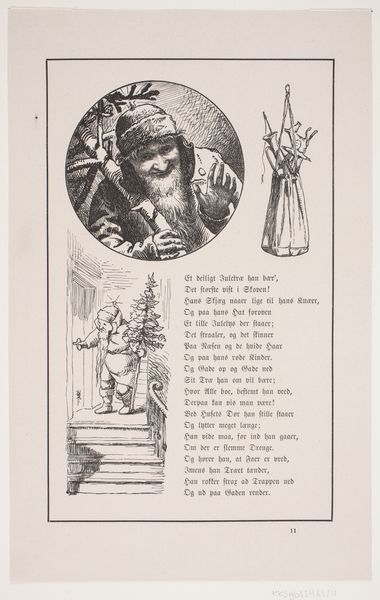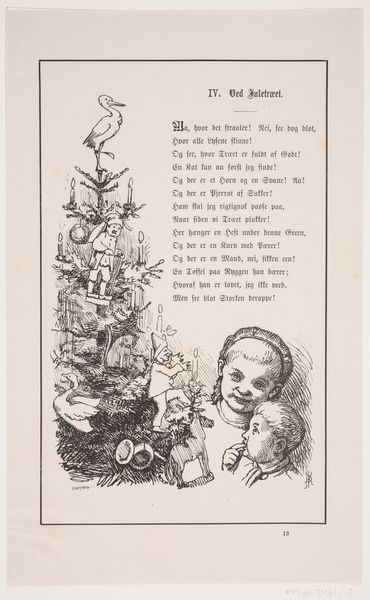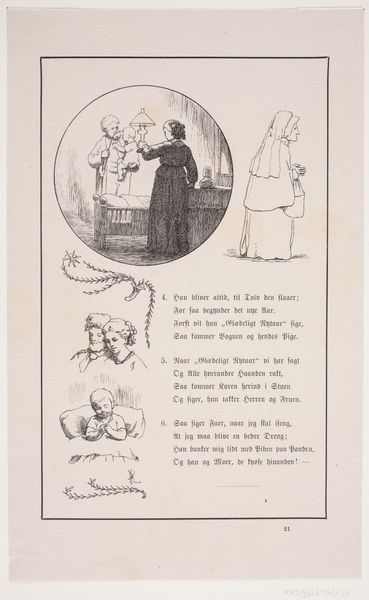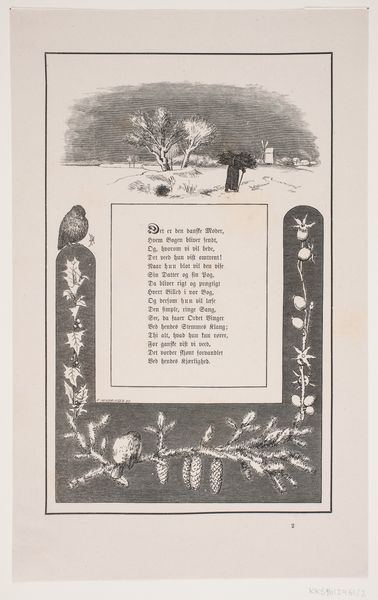
drawing, print, ink
#
portrait
#
drawing
#
narrative-art
# print
#
figuration
#
ink
#
genre-painting
Dimensions: 254 mm (height) x 160 mm (width) (bladmaal), 205 mm (height) x 128 mm (width) (billedmaal)
Curator: Let's delve into this page of illustrations by Carl Leonard Sandberg for Johan Krohn's "Peters Jul," dating back to 1870. Primarily rendered in ink, this work combines both drawing and printmaking techniques. What strikes you initially? Editor: It feels like stepping into a charming, old-fashioned Christmas card! There’s such tenderness in the rendering of the grandmother and child, like a cozy moment frozen in time. I am quite drawn to the wintry botanical borders around the image, that convey a quiet anticipation for the festive season. Curator: Considering its creation as an illustration for a children’s book, we might focus on how the artist skillfully integrates image and text. Notice how the depictions of winter foliage aren’t mere decorations. Editor: They give texture and symbolic weight to the composition. These elements speak to how closely Sandberg was reading Krohn’s text—integrating that seasonal feeling and the warmth of familial love through these hand-drawn forms. I suppose the integration helps emphasize how simple natural forms can create a very strong emotional link. Curator: Precisely. The print, in its accessibility, underscores the burgeoning culture of illustrated books for children at that time and marks new shifts in education and broader aesthetic appreciation for a younger audience. Mass reproduction enabled stories and images to reach families, instilling specific values during a pivotal era of nation-building and industrial change. Editor: Absolutely, and I am reminded of my own grandmother. Those cross-hatched shadows and soft outlines around their faces do evoke this nostalgic, bittersweet fondness that makes it truly relatable and evergreen. Despite all these changes, aren’t there some feelings and stories that always remain the same? Curator: Indeed, it prompts questions about how visual imagery helps to both construct and perpetuate memories—allowing a Danish audience of 1870 and us today to connect to very specific historical moments of cultural and material consumption that tie the illustration with shared ideas. Editor: So well put! Considering our conversation, perhaps there's more to such pieces beyond mere images and materials. It is interesting to observe what echoes those seemingly simple compositions leave within. Curator: Agreed; it illuminates how even ostensibly simple materials tell surprisingly complex narratives.
Comments
No comments
Be the first to comment and join the conversation on the ultimate creative platform.
